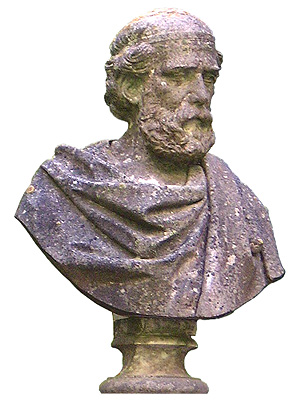 THIS conference will pay tribute to Archimedes, the greatest geometer/scientist/engineer of antiquity. But rather than go back in time to celebrate the achievements of Archimedes within the framework of ancient technology, our speakers and presenters will celebrate the myriad ways in which Archimedes’ lifework, principles, and inventions are being applied today—23 centuries after his lifetime.
THIS conference will pay tribute to Archimedes, the greatest geometer/scientist/engineer of antiquity. But rather than go back in time to celebrate the achievements of Archimedes within the framework of ancient technology, our speakers and presenters will celebrate the myriad ways in which Archimedes’ lifework, principles, and inventions are being applied today—23 centuries after his lifetime.
ARCHIMEDES lived in the Greek city-state of Syracuse on the island of Sicily in the third century BC, up to the time it was conquered by the Romans—a conquest that led to his death. Syracuse at the time Archimedes lived there was a rich and powerful city with a population of 300,000; Cicero described it as … the greatest Greek city and the most beautiful of them all.
ARCHIMEDES was a natural philosopher who objectively studied the laws of nature and the physical universe and sought to apply an axiomatic, deductive approach to the world around him—the cosmos (from the Greek word kosmos, referring to the orderly, harmonious, and systematic universe that we continue to observe and study today).
AT the core of Archimedes’ legacy are his most important written works:
On the Equilibriums of Planes I, II
Quadrature of the Parabola
On the Sphere and Cylinder I, II
On Spirals
On Conoids and Spheroids
On Floating Bodies I, II
Measurement of a Circle
The Method of Mechanical Problems
HE created some intriguing problems, as well—The Cattle Problem, so complicated that the solution had to await the computer age (it is an integer with 206,545 digits). The Stomachion, a game with 14 flat ivory pieces whose objective is still debated today. And The Sand Reckoner in which he tried to calculate the number of grains of sand in the universe (he figured that number to be no more than 1063).
The bust of Archimedes by the Sicilian sculptor Luciano Campisi (1859-1933) is located in the Latomia dei Cappuccini, an ancient stone quarry in Syracuse, Italy, that is now a municipal garden. The depiction, however, is fanciful as no likeness of Archimedes survives.
|


 THIS conference will pay tribute to Archimedes, the greatest geometer/scientist/engineer of antiquity. But rather than go back in time to celebrate the achievements of Archimedes within the framework of ancient technology, our speakers and presenters will celebrate the myriad ways in which Archimedes’ lifework, principles, and inventions are being applied today—23 centuries after his lifetime.
THIS conference will pay tribute to Archimedes, the greatest geometer/scientist/engineer of antiquity. But rather than go back in time to celebrate the achievements of Archimedes within the framework of ancient technology, our speakers and presenters will celebrate the myriad ways in which Archimedes’ lifework, principles, and inventions are being applied today—23 centuries after his lifetime.